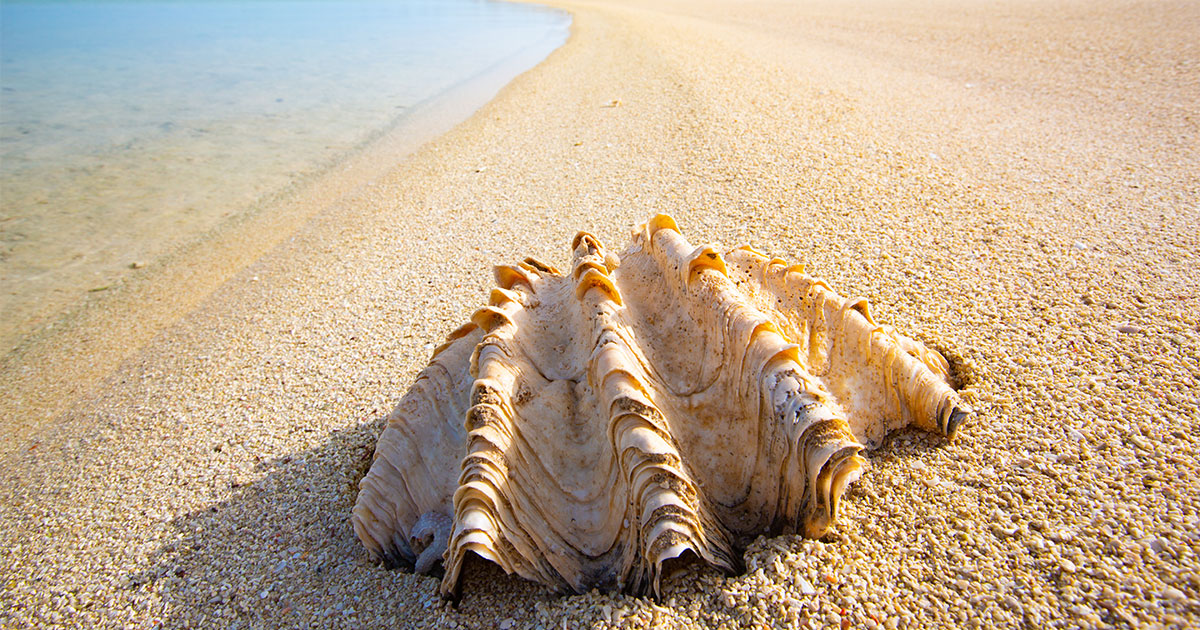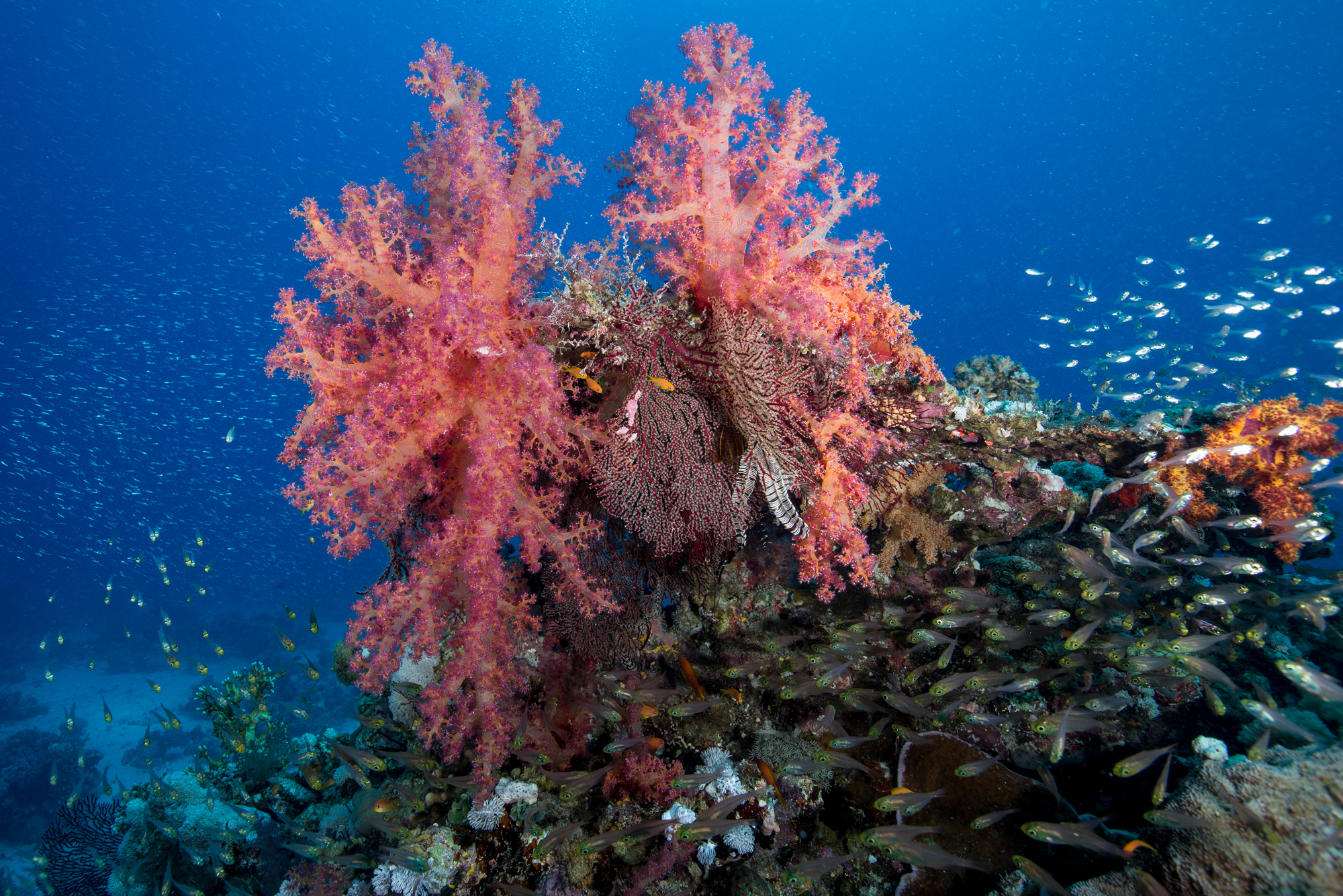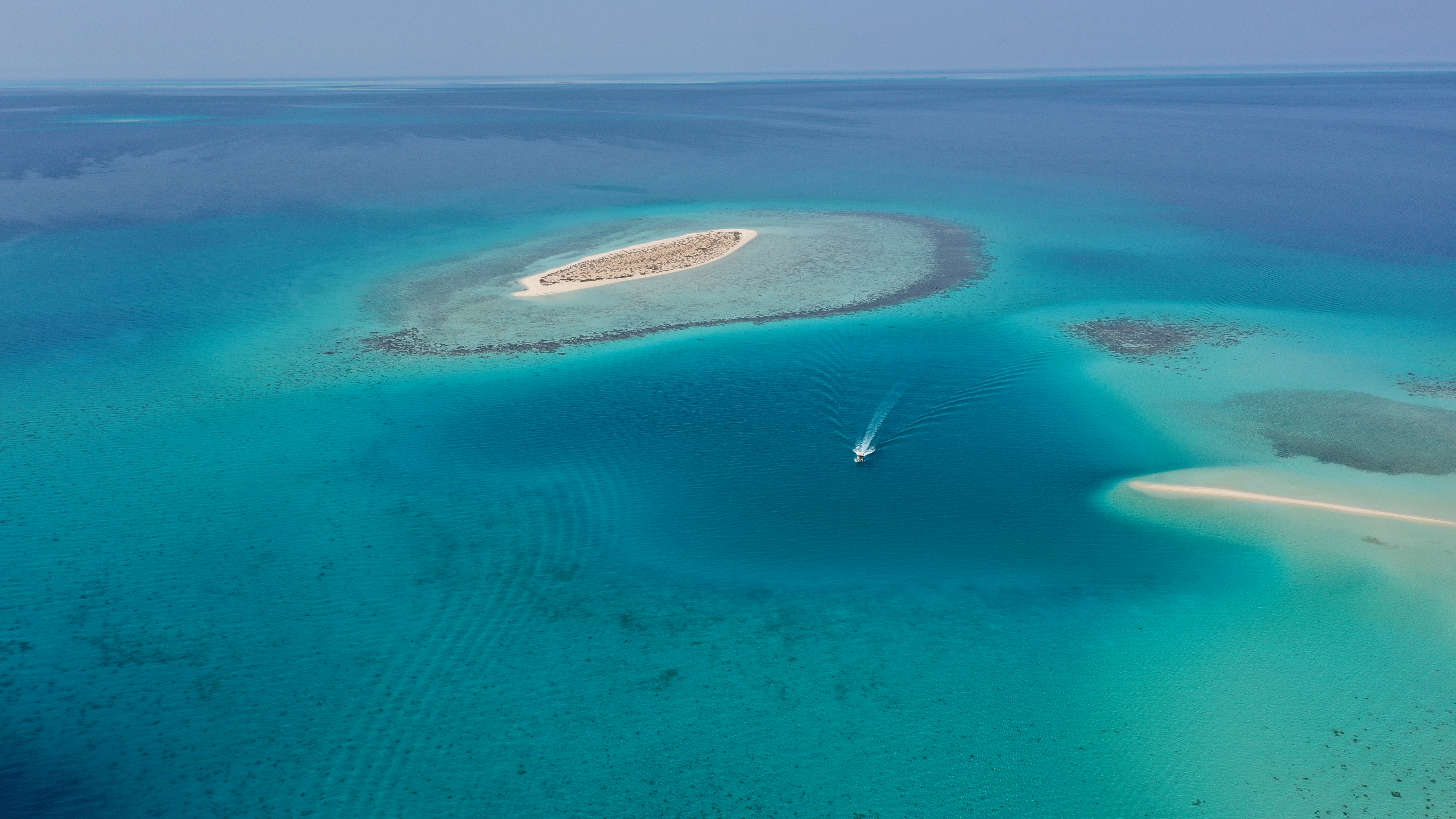At face value, tourism and sustainability are often seen as having opposing interests. Over-development has led to the severe damage of some of the world's most pristine locations. However, as a Distinguished Professor of Marine Science and holder of the Tarak Ahmed Juffali Research Chair in Red Sea Ecology at KAUST, I have seen firsthand how tourism and sustainability can exist in harmony. Throughout my career, I have dedicated my research to finding solutions to the current climate and biodiversity crises. This is driven by a desire to leave the world in a better place than when I first encountered it.
After nearly four decades as a scientist, I have been approached many times by developers because something had gone wrong in the environment, and they sought advice on how to fix it. But when I was first approached by The Red Sea Development Company (TRSDC), the question posed immediately raised my interest: was it possible to develop the Red Sea for tourism without adversely impacting its environment and biodiversity? This was a radically new value proposition, and I was immediately engaged.
TRSDC is committed to creating the world's most ambitious regenerative tourism destination, The Red Sea Project. Spanning across an archipelago of uninhabited islands, desert dunes, and dormant volcanos, their innovative approach to environmental regeneration aims to lift the natural environment to a better state than it was before. Unlike other tourism destinations, TRSDC has devoted considerable time and resources to find unique ways to enhance (not just preserve) the natural environment. This is being done while also delivering a positive impact on the other two axes of sustainability: social and economic, allowing the incredible destination to be enjoyed for generations to come.
Today, I serve as a member of the advisory board. I have used my expertise to help guide the project's regenerative environmental policy, and my research contributes to an extensive Marine Spatial Planning exercise, which helps the team better understand the impact of development and operations, and develop robust plans to enhance, rather than damage, the natural environment. It also identified areas of special conservation value. As a result, the decision was made to leave 75 percent of the destination's 90-plus islands untouched. In fact, less than one percent of the entire project area will be developed.
I see my involvement as an extension of the work I have focused on throughout my career regarding climate change and conservation. By contributing to a project that is redefining what is possible in terms of sustainable development and regeneration, I am inspired by the notion that I will be helping to leave behind a better world than I encountered, one that will still be enjoyed for generations to come.
Taking a regenerative approach to tourism means going further than just conservation alone. After decades of chronic human actions, many of our global ecosystems have become depleted.
In the 21st century, the mantra to conserve and sustain the little that is left is no longer acceptable. Therefore, TRSDC plans to help restore the environment and actively enhance the fragile ecosystems that exist along the Red Sea coast. The ambition TRSDC brings to create net positive conservation value has changed my vision of what role the private sector can play in enhancing the environment. By partnering with the private sector, it is possible to come up with sustainable solutions for saving the planet.
A Unique Destination that Needs to be Protected
The Al Wajh lagoon, where the destination is being developed, is unlike anywhere else in the world. It is an area of extraordinary natural beauty and diversity and home to a diverse range of complex ecosystems and native wildlife. The project encompasses over 90 islands and the world's fourth-largest barrier reef system, with impressive coral walls, and over 175 different species of coral, and 195 species of fish.
With no input from freshwater sources, the Red Sea is unique in that it is very salty and warm. This has given rise to exceptionally resilient corals, eleven species of carbon-burying seagrasses that provide feeding grounds for sea turtles and dugongs, and, bucking a global trend of decline, an expanding population of mangroves.
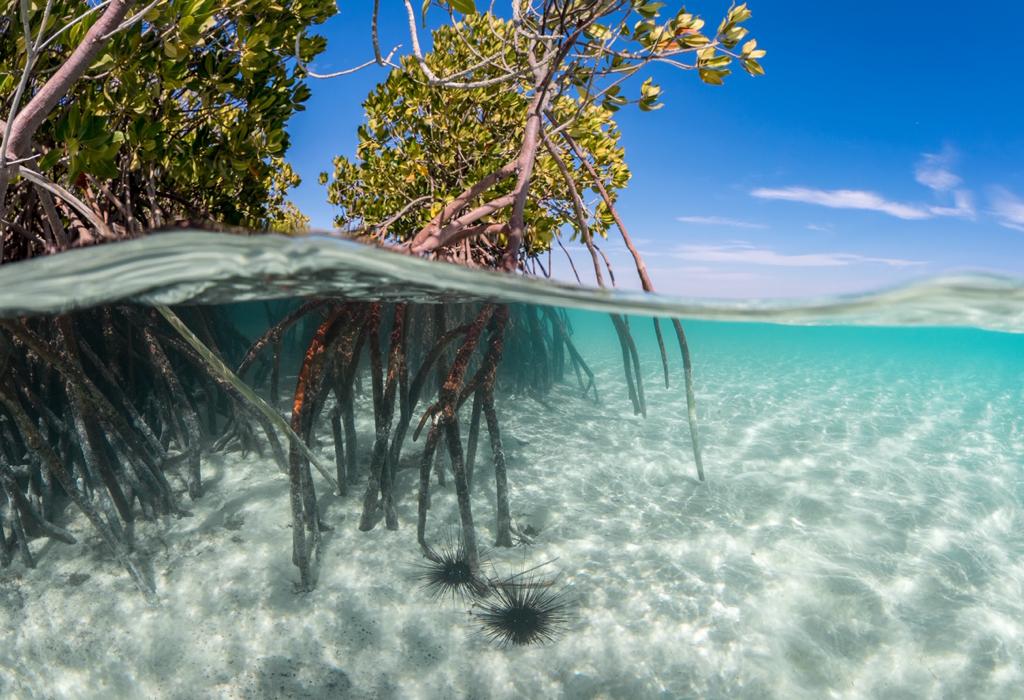
However, this ecosystem is fragile. Before the developers began work here, it was under threat from overfishing, littering, and the impacts from invasive species. As part of its commitment to regenerative tourism, the company is removing these pressures so that the natural ecosystems can continue to thrive and flourish in a way that would not have been possible: not even if the region was given a protective area status.
The complex nature and sheer size of the project makes it difficult to capture the full force of what TRSDC is trying to achieve. Simply put, it is truly groundbreaking.
The most impressive component of the project's regenerative tourism concept is the ambitious goal to achieve a 30 percent net conservation benefit by 2040. To achieve this, myself, KAUST, and TRSDC are working together to expand critical habitats and restore the abundance of the site's endangered species, so that the area is not only protected but actually benefitting from the development. Setting this goal is unheard of. But by making real progress in achieving it, TRSDC is in a leading position to set new benchmarks for what is possible in sustainable development and drag the private sector along in a new quest for a positive role.
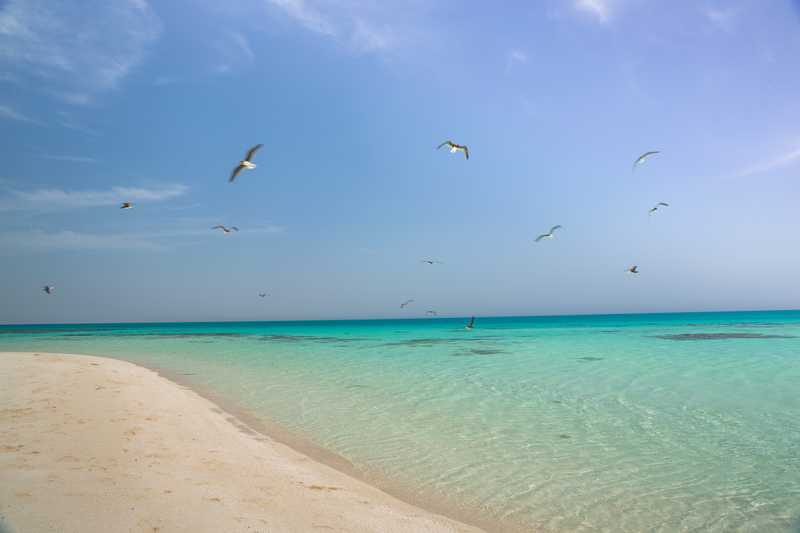
The destination is also going against the grain by establishing its own targets for becoming carbon neutral. Unlike other global pledges, which have set 2050 as the year to achieve this, TRSDC has gone further and pledged to be carbon neutral once fully operational and open to guests. This is being achieved by building the world's largest battery storage facility, so that the destination can be powered by solar and wind energy 24 hours a day with no connection to the National Grid. The avoided CO2 emissions to the atmosphere is equivalent to nearly half a million tons each year and the destination will be the first tourism project of its size, to be powered solely by renewable energy.
Blue Carbon Strategy—Creating Carbon Sinks with Mangrove Forests
Along with TRSDC, KAUST, and many other academic and scientific institutions involved in the project, we aim to promote a groundbreaking approach for regenerative tourism. Part of my role at the project has been implementing my Blue Carbon strategy, an approach I have helped develop that aims to mitigate climate change by conserving and restoring plant-dominated coastal habitats, which have a huge capacity as carbon sinks.
Habitats such as seagrass, mangroves, and salt marshes, which are abundant across the project site, play an important role in sequestering carbon from the atmosphere and effectively burying it into the soils below. By breathing in carbon dioxide and expelling oxygen, they act in the reverse of humans and are essentially 'sinks' that can remove the carbon dioxide in the atmosphere. A recent KAUST study of Red Sea mangrove forests also found that they can efficiently capture and store microplastics in their sediments. This research brings light to the mystery of missing marine plastic, and reveals that mangroves are hugely successful at trapping plastics and burying them in their soils where they can no longer harm vulnerable marine life or human consumers.
By conserving, restoring, and expanding these habitats across the destination, TRSDC aims to remove significant amounts of greenhouse gases already in the atmosphere, and plastics in the ocean, while protecting the shoreline from sea-level rise with climate change. Therefore, this Blue Carbon strategy has a three-pronged approach: it positively contributes to climate action while expanding biodiversity and the site's critical habitats, and protecting the shoreline while attenuating the impacts of sea-level rise.
Ultimately, much of what is being achieved at The Red Sea Project has never been done before. We are working together to pioneer a truly unique and innovative approach to sustainable development. It is an exciting time to be working with TRSDC and KAUST as the project moves from its design phase towards progressive development. The next year will demonstrate just how successful our Marine Spatial Planning exercise and my Blue Carbon strategy has been, and we will see the direct environmental benefit at the destination come to light.
This feature appeared in Environment, Coastal & Offshore (ECO) Magazine's 2021 Summer edition, to read more access the magazine here.


